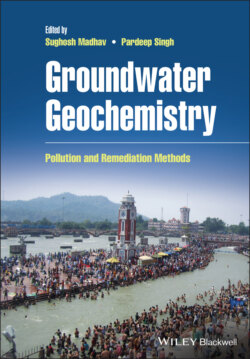Читать книгу Groundwater Geochemistry - Группа авторов - Страница 19
1.3.2 Remediation
ОглавлениеThe generally applied methods for defluoridation are membrane separation, coagulation‐precipitation, adsorption, lime softening, and activated alumina (Grützmacher et al. 2013). Hydrous bismuth oxides (HBOs) have been examined as a potential adsorbent for the removal of F− from the contaminated water or aqueous solution (Srivastav et al. 2013). Reverse osmosis is comparatively insensitive to pH because it is a membrane separation technique (Arora and Evans 2011). However, it necessitates a cautious assessment of water characteristics and pretreatment to avert fouling. In addition to this, resistance and fouling of membrane increases due to the accumulation of rejected species and particles. In poor and rural areas of developing countries, the membrane is seldom considered a suitable technology because of issues like expense, fouling, operational sophistication, and difficulty of intermittent operation. Adoption of these advanced technologies in rural, resource‐limited areas of the world is not practical. Hence, a technique called the Nalgonda technique, which was first established by the National Environmental Research Institute in India, is applied as a household treatment. This technique is based on the coagulation‐flocculation‐sedimentation process of lime and aluminium sulphate (alum)– for fluoride elimination. Adsorption methods for fluoride removal are primarily based on clay (Mahramanlioglu et al. 2002; Chidambaram et al. 2003), charcoal (Mjengera and Mkongo 2002; Medellin‐Castillo et al. 2007), and aluminium‐based adsorbents (Ghorai and Pant 2004; Sarkar et al. 2007; Alfredo et al. 2014).
